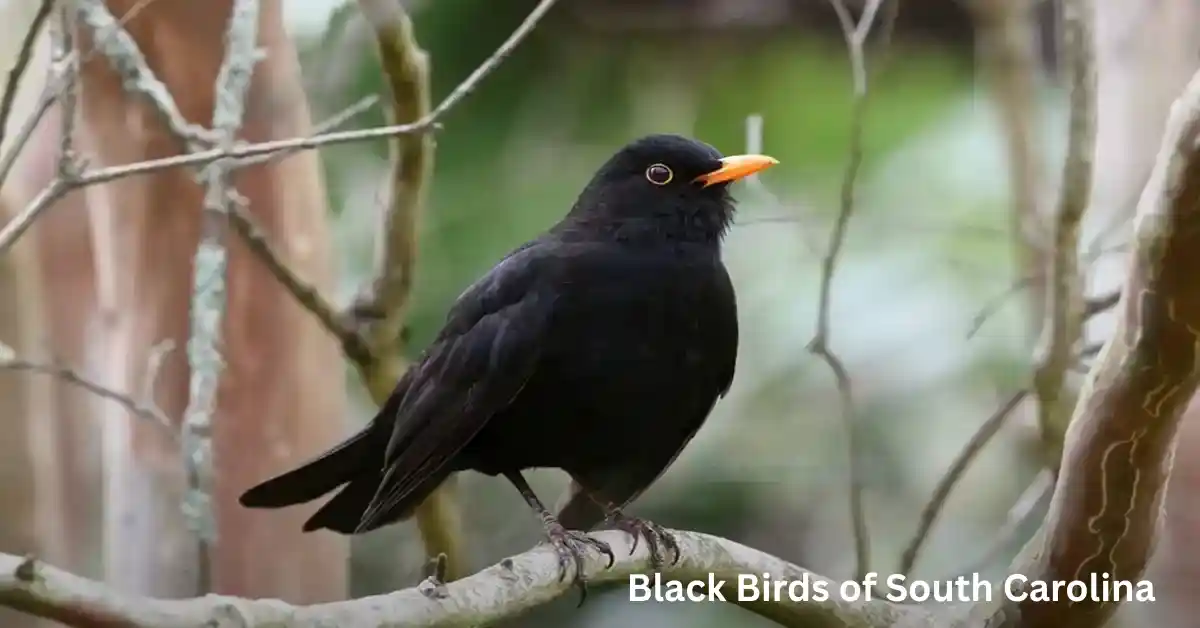I’ve always been drawn to black birds in South Carolina. As a kid, I would watch Common Grackles flash their blue-black feathers in the sun. Their glossy colors felt almost magical. I’d also see American Crows, smart and playful, calling to each other from the trees. Each bird had its own personality, and I wanted to know more.
If you’ve ever spotted a small black bird hopping around your yard or a large black bird soaring overhead, you might wonder what they are. Some have a blue tint, while others stay pure black. In this guide, I’ll help you tell them apart. By the end, you’ll be able to identify South Carolina’s black birds with ease!
Table of Contents
Small Black Birds of South Carolina
Not all black birds are big and bold. Some are smaller, quick, and surprisingly colorful when the light hits them just right. I remember the first time I saw a Common Grackle up close. At first, it looked like just another black bird, but then—bam!—the sunlight hit, and suddenly, its feathers shimmered with deep blues and purples. That moment made me realize how unique these birds are.
List of Common Black Birds in South Carolina
Here are some of the most frequently spotted black birds in the state:
- Common Grackle
- American Crow
- Fish Crow
- Black Vulture
- Brewer’s Blackbird
- Rusty Blackbird
- European Starling
Common Grackle
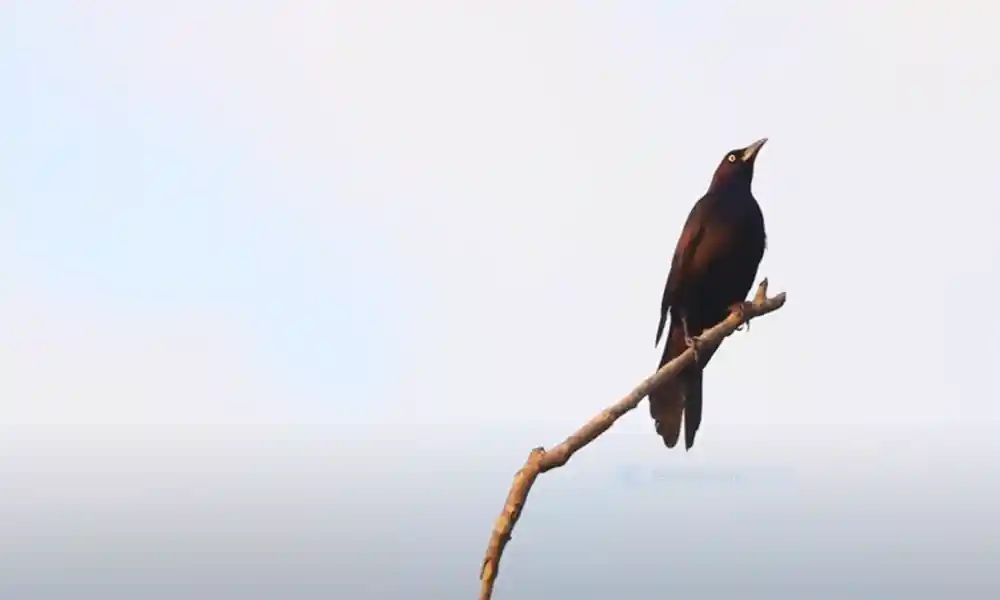
Size & Identification: About 11–13 inches, with a long tail and striking iridescent blue-black feathers. Males have a glossy shine, while females are duller.
Habitat: Found in parks, woodlands, and even parking lots. These birds are everywhere in South Carolina, often gathering in loud, chattering flocks.
Behavior & Diet: Grackles are omnivores, eating insects, seeds, and even scavenging scraps. I’ve seen them boldly steal food from picnic tables, completely unbothered by people. A black bird with iridescent feathers shimmering in blue and green hues.
Rusty Blackbird
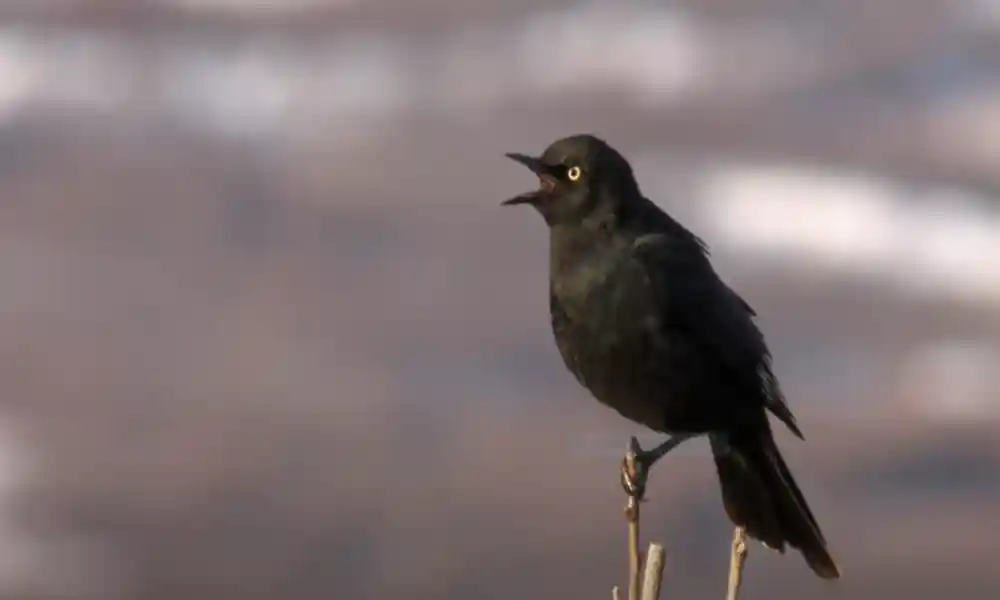
Size & Identification: Smaller than a grackle at 8.5–9.8 inches. Their feathers are dark in summer but turn a rusty brown in winter, giving them their name.
Habitat: These birds love swamps and wetlands, making them a bit harder to spot than grackles or crows. If you’re near a marshy area in winter, keep an eye out for their rusty-colored plumage.
Conservation Status: Sadly, Rusty Blackbirds are disappearing fast. Their population has dropped by more than 85% over the last few decades. Scientists are still trying to understand why.
Brewer’s Blackbird
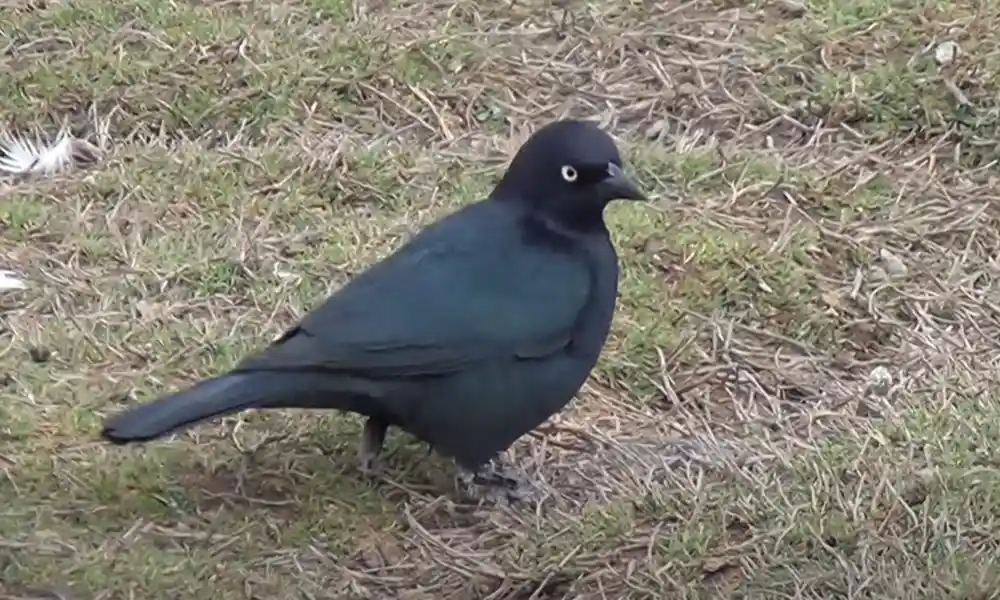
Size & Identification: Between 7.9–9.8 inches, Brewer’s Blackbirds are sleek with a greenish-blue gloss on their feathers. Females are plain brown.
Habitat: Unlike the Rusty Blackbird, Brewer’s Blackbirds prefer open fields, meadows, and even parking lots. I once saw a flock near a grocery store, casually picking at crumbs in the parking lot.
Behavior & Diet: They love to forage on the ground, eating insects and seeds. They also tend to travel in mixed flocks, sometimes hanging out with grackles or cowbirds.
Large Black Birds in South Carolina
Not all black birds are small and quick. Some are big, bold, and downright fascinating. I remember the first time I really noticed an American Crow—not just saw it, but noticed it. It wasn’t just a noisy bird in the background. It was watching me. Tilting its head, studying me like it knew something I didn’t. That’s when I realized these birds aren’t just common; they’re incredibly smart.
American Crow
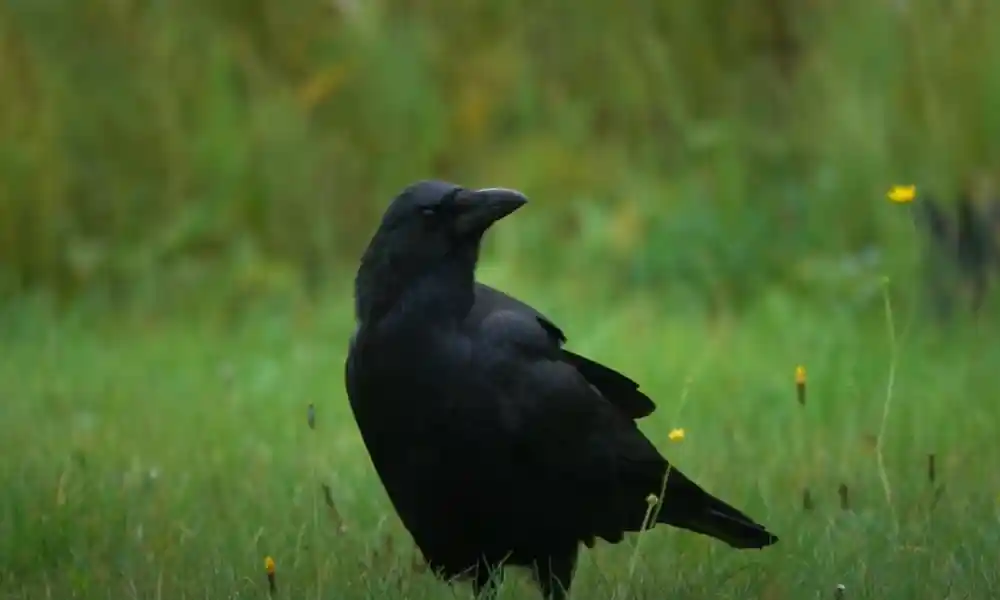
Size & Identification: American Crows are big, about 16–20 inches long. They’re completely black, from their thick beaks to their glossy feathers. You might think all crows look alike, but if you watch closely, you’ll notice their feathers have a slight sheen in the right light.
Habitat: You can find American Crows just about anywhere—cities, forests, farmland, and even parking lots. They’re adaptable and aren’t afraid to be around people. If you’ve ever heard a loud, raspy caw, you’ve likely spotted one nearby.
Intelligence & Behavior: These birds are brilliant. They recognize faces, use tools, and even play games with each other. One time, I watched a crow drop a walnut onto a busy street, then wait for a car to crack it open. Talk about problem-solving!
Fish Crow
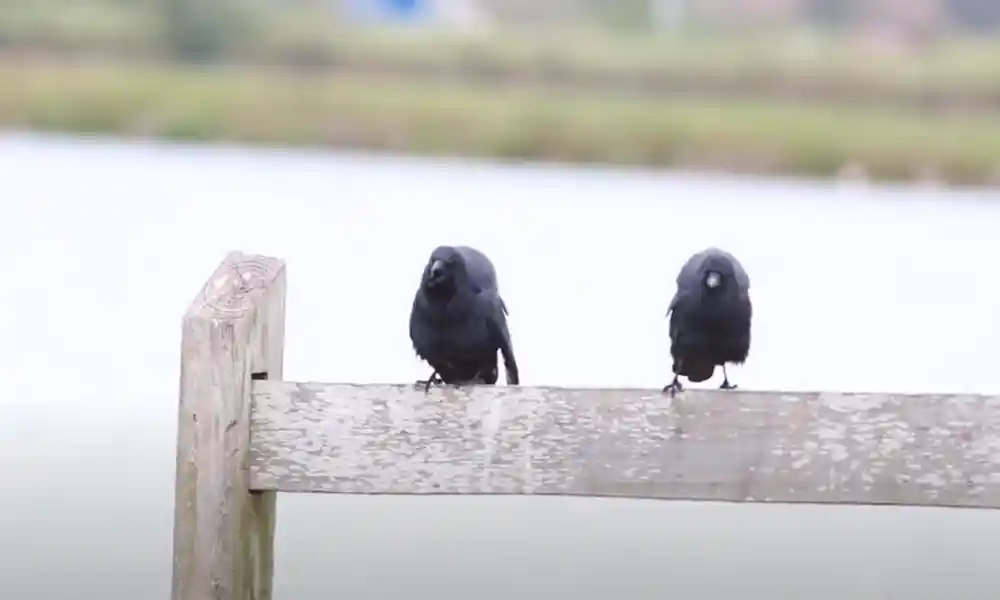
Size & Identification: Fish Crows look almost identical to American Crows but are a bit smaller, around 14–16 inches. They have the same all-black feathers and thick beaks, so telling them apart takes practice.
Habitat: These crows love water. You’ll find them near coastal areas, rivers, lakes, and wetlands. If you’re near the coast and see a crow, chances are it’s a Fish Crow.
Call Distinction: The easiest way to tell them apart from American Crows is by their call. While American Crows have a deep caw, Fish Crows have a nasal, almost whiny “uh-uh” sound. The first time I heard it, I thought a bird had a sore throat!
Black Vulture
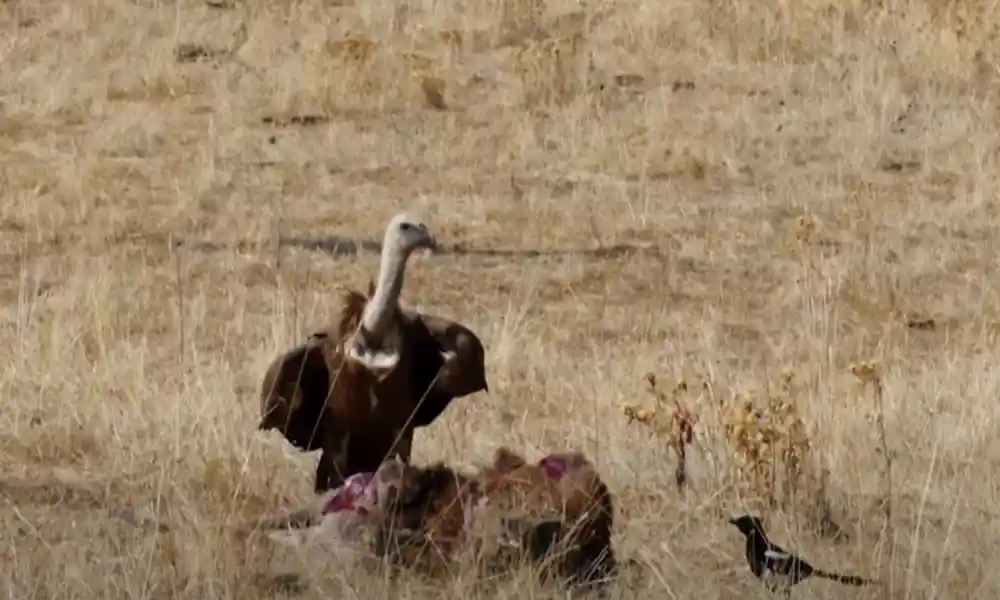
Size & Identification: Now we’re talking big birds. Black Vultures are 23–27 inches long, with broad wings and short, stubby tails. Their bodies are all black, but their heads? Bare and wrinkled. Some people find them eerie, but I think they look ancient—like something out of a prehistoric world.
Habitat: You’ll often see Black Vultures soaring over open fields, roadsides, and farms. If you’re driving on a country road and spot a group of large black birds circling above, there’s a good chance they’re Black Vultures.
Diet & Behavior: These birds are scavengers. They eat dead animals. It might seem gross, but they actually do us a favor by keeping the environment clean. I once saw a group of them cleaning up a deer carcass on the side of the road. It was nature’s recycling team in action.
These large black birds of South Carolina each have their own unique traits. Whether it’s the intelligence of the American Crow, the water-loving Fish Crow, or the scavenging skills of the Black Vulture, they all play an important role in the ecosystem. Keep an eye out, and you might notice something new about them, just like I did!
Black Birds of South Carolina Identification
Ever spotted a black bird and wondered, “What kind is that?” You’re not alone. At first glance, they all seem the same, but once you start paying attention, the details stand out. Some are small and sleek, while others are big and bulky. Some shimmer with blue and green in the sunlight, while others stay jet black. Their calls, habits, and even the way they fly can give them away. Let’s break it down so you can identify them with ease.
Size & Shape
One of the easiest ways to tell black birds apart is by their size and shape. I remember watching two black birds on my backyard fence—one was a grackle, long and lean, with a tail that almost dragged behind it. The other was a crow, bulky with a thick beak and a confident stance. The difference was obvious once I took a closer look.
Smaller black birds, like the Brewer’s Blackbird and Rusty Blackbird, have slimmer bodies and shorter tails. Common Grackles, though still on the smaller side, have that telltale long tail and sleek body. Then there are the large black birds—the American Crow, Fish Crow, and Black Vulture—each with a heavier build and broad wings.
A simple trick? Look at the proportions. If the bird has a long tail and a slim frame, it’s likely a grackle. If it’s chunky with a thick beak, it’s probably a crow. And if it has a bald head and massive wings? That’s a vulture!
Plumage & Color Variations
Not all black birds are just black. Some have iridescent feathers that shimmer in the light, while others change colors with the seasons. The first time I noticed a grackle in the sun, I thought I was seeing things. One second, it looked plain black. The next, it flashed deep blue and purple, like an oil slick. Brewer’s Blackbirds have a similar glossy sheen, sometimes reflecting hints of green.
Then there’s the Rusty Blackbird. These little guys are like shape-shifters. In summer, they’re dark, but in winter, their feathers take on a rusty brown tint. The first time I saw one, I thought it was a different species altogether!
Some birds also have contrast markings. The Yellow-headed Blackbird, though rare in South Carolina, stands out with its bright yellow head against its black body. Meadowlarks aren’t true black birds, but their dark wings with yellow chests can cause confusion. Paying attention to these subtle details can make all the difference in identification.
Call & Behavior
Bird calls are like fingerprints—each species has a unique one. One of my favorite birdwatching moments was realizing I could tell crows apart just by sound. The American Crow has that classic “caw, caw,” deep and loud. But the Fish Crow? It has a more nasal, almost whiny “uh-uh” sound. The first time I heard it, I actually laughed—it sounded like the bird was protesting something!
Beyond calls, their behavior can also give them away. Grackles tend to walk with a bold strut, often foraging on the ground in flocks. Crows, on the other hand, are incredibly social and intelligent. I once watched a group of them drop nuts onto a road, waiting for cars to crack them open—pure genius! Black Vultures, meanwhile, often glide in the sky, riding the wind in lazy circles before swooping down to scavenge.
Final Thoughts
The next time you see a black bird, take a moment to notice the details. How big is it? Does it have a shimmer in its feathers? What sound does it make? With a little practice, you’ll be able to identify them in no time. And trust me, once you start paying attention, you’ll never see black birds the same way again!
Black Bird with a Blue Tint – Identification Guide
Some black birds aren’t just black. When the light hits just right, their feathers flash with deep blues and greens, almost like they’re carrying a hidden secret. The first time I noticed this, I was standing in my backyard, watching a group of birds forage near a bird feeder. At first glance, they looked plain black. But then, one turned its head, and for a split second, its feathers shimmered with an iridescent blue. It was like watching spilled ink reflect the sun. That moment sent me down a rabbit hole of learning about these fascinating birds.
Common Grackle
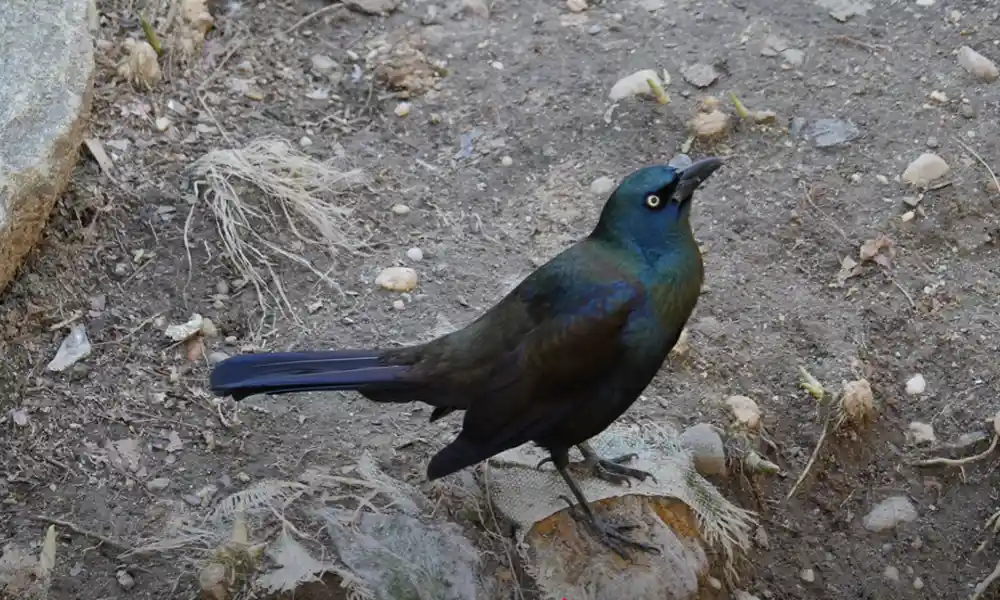
If you’ve ever seen a black bird that seems to glow blue in the sunlight, chances are, it was a Common Grackle. These birds have a glossy, almost metallic sheen, shifting between deep purples and blues depending on the angle of light. They’re bold, too. I once watched a grackle strut across a parking lot, pecking at crumbs like it owned the place. Unlike crows, which are bulkier, grackles are long and sleek with a keel-shaped tail that looks almost too big for their bodies.
They’re found everywhere—parks, backyards, parking lots—and they’re not shy. If you leave food out, they’ll find it. I used to think they were just noisy scavengers, but now, every time I see one glistening in the sun, I can’t help but stop and appreciate that hidden burst of color.
Brewer’s Blackbird
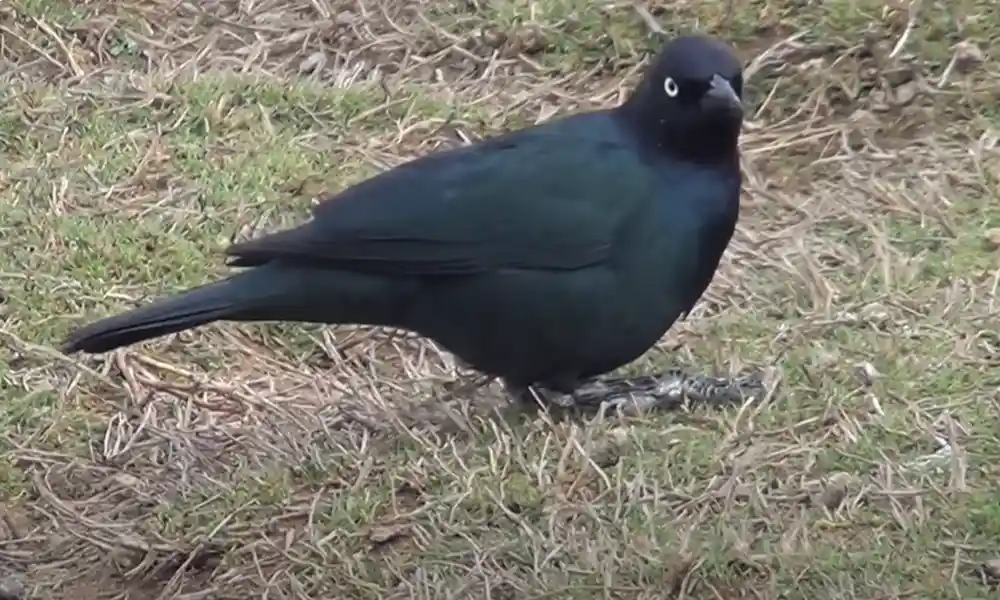
Brewer’s Blackbirds might not be as flashy as grackles, but they still have a secret glow. Males have a glossy, greenish-blue shine, like the surface of a dark lake catching the sky. Females, on the other hand, are a plain brown, blending into the background.
These birds love open fields and roadsides. I remember spotting a flock once near a grocery store, hopping between parked cars. They weren’t looking for scraps like pigeons do—they were scanning the ground, hunting for insects. Watching them, I realized how much we overlook the beauty in everyday birds.
If you want to see their colors, wait for the right light. Early morning or late afternoon, when the sun is at an angle, is the best time. Stand still, watch closely, and you might just catch that hidden shimmer.
European Starling
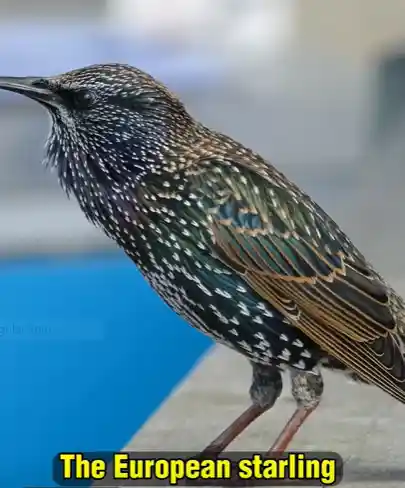
Not native, but definitely here to stay. European Starlings were brought to North America in the 1890s, and now, they’re everywhere. In winter, they’re speckled with white spots, but in summer, their feathers turn glossy black with a blue-green sheen.
I once saw a murmuration of starlings at dusk, swirling in the sky like a living wave. It was mesmerizing. On the ground, they might seem like pests, but when they take flight together, it’s like watching nature paint with movement. If you ever see a black bird that looks a little too shimmery and moves in big flocks, it’s probably a starling.
Final Thoughts
Black birds with a blue tint aren’t rare, but you have to look closely to appreciate them. Whether it’s the bold Common Grackle, the sleek Brewer’s Blackbird, or the ever-present European Starling, these birds add a touch of hidden magic to the everyday world. Next time you see one, take a moment. Wait for the light. You may be shocked by what you see.
How to Attract Black Birds to Your Backyard
Ever wanted to turn your backyard into a birdwatcher’s paradise? If you love watching black birds like grackles, crows, or blackbirds, you can make your yard irresistible to them with just a few simple changes. I’ve spent years tweaking my own backyard setup, and now it’s a daily hotspot for these fascinating birds. Here’s how you can do the same!
Best Foods to Offer
Food is the fastest way to get black birds to visit regularly. These birds aren’t picky, but some foods will keep them coming back for more.
- Sunflower seeds – A favorite for many black bird species, packed with energy.
- Cracked corn – Affordable and loved by grackles, crows, and blackbirds.
- Fruit – Slices of apples, berries, or raisins will attract a variety of species.
- Nectar – While not their primary food source, nectar can bring in species like starlings.
I remember setting out cracked corn for the first time and being amazed at how quickly Common Grackles showed up. They hopped around excitedly, calling to their friends as if they had discovered a secret buffet!
Nesting & Habitat Considerations
If you want black birds to stick around, they need more than just food—they need a place to call home. Creating a bird-friendly environment is key.
- Provide trees and shrubs – Black birds love tall perches and dense foliage for nesting.
- Leave some open space – Grackles and blackbirds prefer areas where they can forage easily.
- Install nesting platforms – Crows and blackbirds may use them if natural spaces are limited.
One year, I let a section of my yard grow wild, and suddenly, blackbirds started nesting there. It was a simple change, but it made a world of difference in attracting more birds.
Ethical Birdwatching Practices
It’s exciting to have birds visit, but it’s important to respect their space and well-being.
- Respect migratory patterns – Some black birds travel long distances; avoid interfering with their natural cycles.
- Keep a safe distance – Observe from afar to avoid stressing the birds.
- Avoid disturbing nests – If you notice a nest, give it space to ensure the birds feel safe.
One mistake I made early on was getting too close to a grackle’s nest. The parents became agitated, and I quickly realized that giving them space was the best way to keep them around. Now, I watch from a distance and let them thrive naturally.
Final Thoughts
Attracting black birds to your backyard is all about food, shelter, and respect. A few simple changes can transform your space into a haven for these intelligent, fascinating creatures. Start small—offer some sunflower seeds, plant a few shrubs, and watch as the magic happens. Trust me, once you hear the calls of crows in the morning or see a grackle’s feathers shimmer in the sunlight, you’ll be hooked!
What is the most common black bird in South Carolina?
American Crow & Common Grackle.
What large black bird is often seen near roadsides?
Black Vulture.
What black bird has a blue or green tint?
Common Grackle, Brewer’s Blackbird, European Starling.
How can I tell the difference between a Fish Crow and an American Crow?
Fish Crows have a nasal “uh-uh” call, while American Crows caw loudly.
Conclusion
South Carolina’s black birds are diverse, intelligent, and essential to the ecosystem. Whether you’re spotting a shimmering grackle, a clever crow, or a soaring vulture, each bird has its own story. If you spot a black bird, look closer. You might learn something new!
Also Read: Dinosaurs vs Birds: Key Differences That Will Amaze You
I still remember the day that sparked my love for birds. I was just a kid, sitting in my backyard, when a tiny bird landed near me. It moved so fast, its feathers flashing in the sunlight, and then it sang—soft, clear, and almost magical. In that moment, birds became more than just creatures in the sky. They became a mystery I wanted to solve.
That curiosity never faded. It led me to study Biology at the University of Scranton, where I dove deep into the science of birds—their behavior, their calls, and the incredible ways they survive. Today, that same passion drives me, and through Earth of Birds, I get to share it with you.
Discover more from Earth of Birds
Subscribe to get the latest posts sent to your email.

